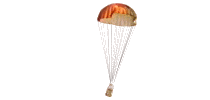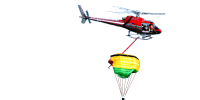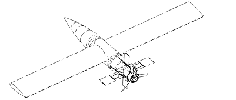A history of innovation, design and development across a broad range of disciplines:
1968:
Design and development activities began with both radio-controlled gliders and powered aircraft.
1970-1971:
Rogallo Hang Gliders: At 15 years of age, one of my Radio Controlled Sailplane Club members conveyed to me that I could build a Hang Glider for less than it would cost to build another RC Sailplane. He described the entire “plan set” over the telephone in less than 5 minutes. I jotted it down as quickly as he said it. It was fabricated and ready to fly within the following week and flown a couple of days after that. It was this event that propelled me into studying flying machines in earnest. This initial version was followed by several refinements to this basic Rogallo configuration including the addition of a simple parachute recovery system that could be deployed in the event of entering a full luff dive. I started lessons in full scale Gliders at California City Airport.
1972:
A relatively low aspect ratio swept flying wing rigid wings glider was designed built and test flown. It was a great lesson, it had a much greater parts count, was far more complex and took very much longer to build and to set up to fly. It was a job to go flying, and the performance increase was not in stride with the in the level of complexity and inconvenience. There has to be a better answer….
I received my FAA Private Pilot’s License in October shortly after my 17th birthday.
For my next Hang Glider design, I concluded that a high performance Rogallo would be my next project. A concept was forming in my mind. I built multiple subscale models until I finally settled on the design of the “Dragonfly.” It was a high aspect ratio Rogallo wing with finite truncated wingtips. The first “proof of principle” prototype took less than two days to build. Once completed, I rushed out to our local training hill to perform initial low altitude flight tests. I was concerned about its controllability via weight shift due to its near 30-foot wing span. The first flight allayed any worries regarding the directional controllability. It was sensitive and positive in both pitch and roll control. The glide was close to double of my previous standard Rogallo. I was excited at the possibilities.
1974:
First production prototype Dragonfly: I used nearly my entire summer’s wages from my job at Myers Boats to purchase the appropriate aluminum tubing for the airframe, hardware and Dacron sailcloth sail. It took weeks to build this more refined Prototype. The first test flights exceeded expectations in pretty much every way. I made about a dozen flights and our 350-foot high intermediate flying site in Kettleman Hills California. Once the tuning was complete. It was time to make a high flight at Tollhouse California. It was late summer, so I chose to fly pretty early in the morning before the convective turbulence started. After a methodical setup and preflight. I shouldered my new Glider and ran off the 1500-foot high rock face. Take off was easy and uneventful. The glide was markedly better than anything that I flown or seen. I arrived at the landing sit meadow at nearly 1000 feet above the ground. Note that usually in our “Standard Rogallo” Gliders we would arrive at a few hundred feet above the ground and if we could eek out a couple of 360-degree turns before landing, it was a great flight. However this first high altitude test flight was clearly different, I felt a few bumps in the air. I knew this was an early morning thermal just starting to form, I turned towards what I figured was the center of the lift air and starting turning, and turning and realized after about 10 circles, I was higher than when I started. This was a game changer. This was what Hang Gliding was meant to be! I continued to fly my Dragonfly and had more than a handful of soaring flights. It was like living a dream. In December of 1974, I travelled South To Escape Country to enter the Hang Gliding National Competition. Upon arrival, there was great curiosity as to what a “Dragonfly” was. I was almost not allowed to fly because it was “radically different.” This meet was a showcase for the Dragonfly and at 19 years old, Pete Brock of Ultralite Products offered me a job as lead of Hang Glider R&D. I knew of Pete’s incredible reputation in the automotive Industry. He was and is still famous for his Shelby Cobra Coupe, BRE Race Team and other automotive design and racing accomplishments.
1975-1986:
I was responsible for the Ultralite Products Hang Glider line. During this period I designed, created drawings and sail patterns for over 40 Hang Gliders, 1 foot-launched sailplane, and 3 powered ultra light aircraft. The most notable achievement was the Comet Hang Glider in early 1980. It set a new standard for performance and National and World Class competitions for the following 3 years.
1986-2012:
Transition to commercial aerospace and DOD Markets...
(This 25 year block will be filled in the future)
Founded Vertigo, Inc. with Glen Brown.
Developmental Sciences
My T3B Incorporated was founded in June of 2012 by Roy A. Haggard.




